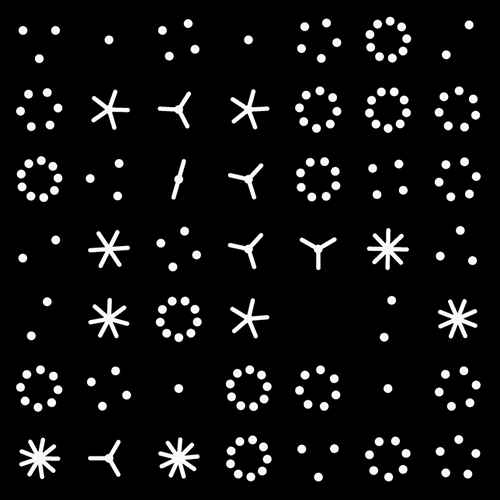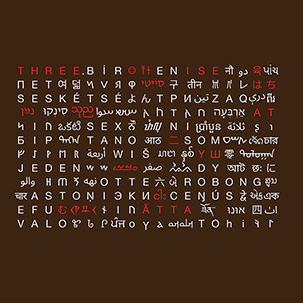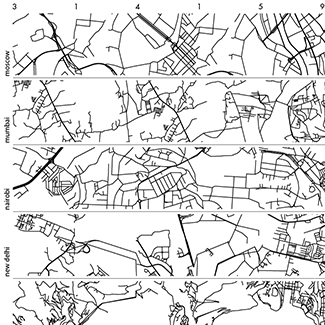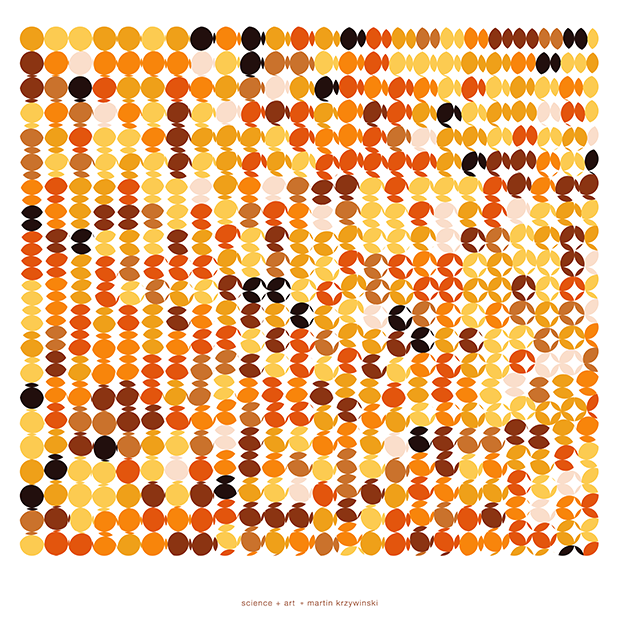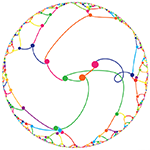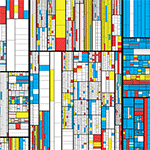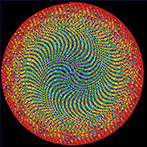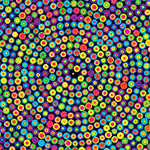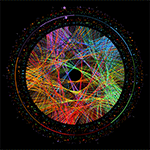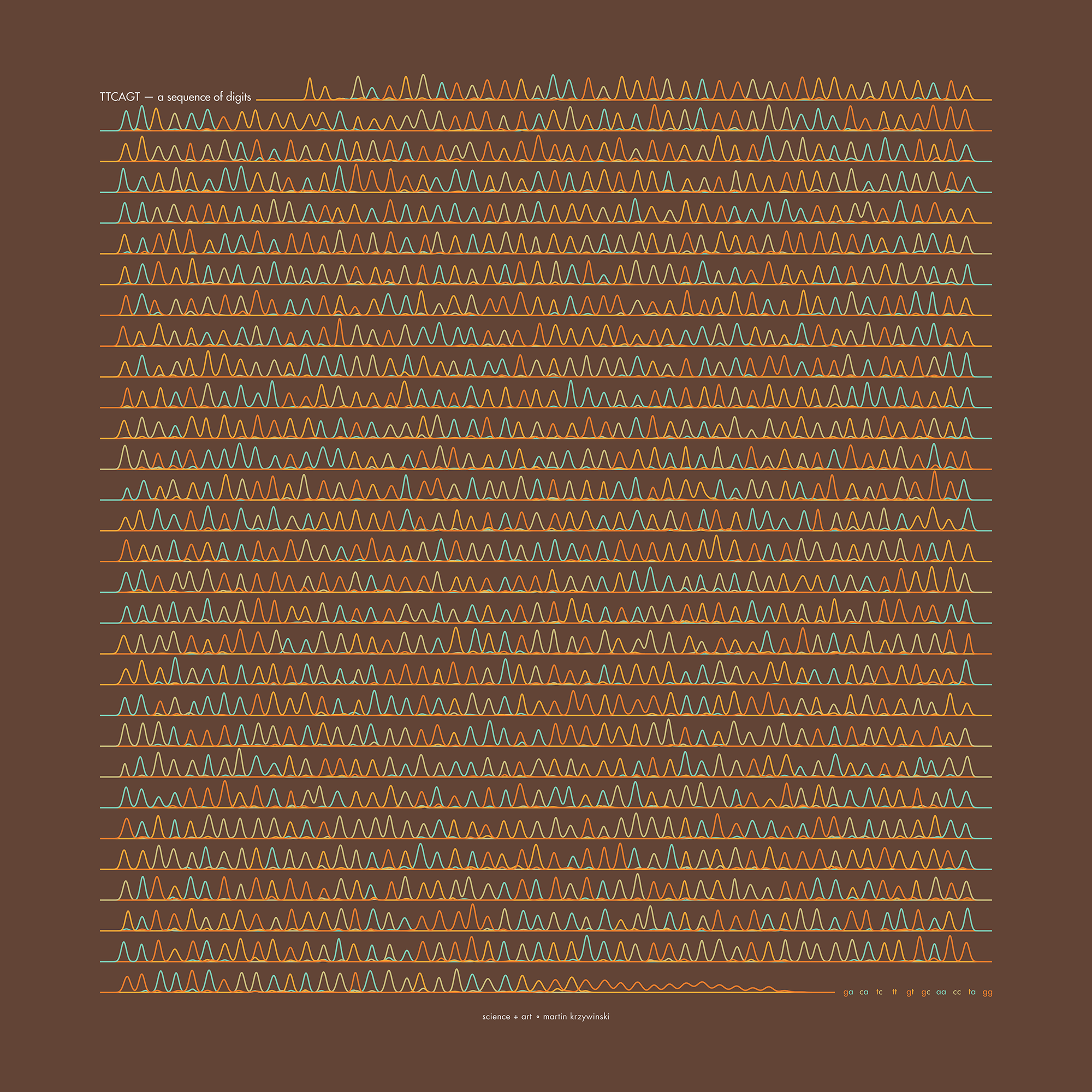 buy artwork
buy artwork
`\pi` Day 2016 Art Posters
On March 14th celebrate `\pi` Day. Hug `\pi`—find a way to do it.
For those who favour `\tau=2\pi` will have to postpone celebrations until July 26th. That's what you get for thinking that `\pi` is wrong. I sympathize with this position and have `\tau` day art too!
If you're not into details, you may opt to party on July 22nd, which is `\pi` approximation day (`\pi` ≈ 22/7). It's 20% more accurate that the official `\pi` day!
Finally, if you believe that `\pi = 3`, you should read why `\pi` is not equal to 3.
This year's `\pi` day art collection celebrates not only the digit but also one of the fundamental forces in nature: gravity.
In February of 2016, for the first time, gravitational waves were detected at the Laser Interferometer Gravitational-Wave Observatory (LIGO).
The signal in the detector was sonified—a process by which any data can be encoded into sound to provide hints at patterns and structure that we might otherwise miss—and we finally heard what two black holes sound like. A buzz and chirp.
The art is featured in the Gravity of Pi article on the Scientific American SA Visual blog.
this year's theme music
All the art was processed while listening to Roses by Coeur de Pirate, a brilliant female French-Canadian songwriter, who sounds like a mix of Patricia Kaas and Lhasa. The lyrics Oublie-moi (Forget me) are fitting with this year's theme of gravity.
Mais laisse-moi tomber, laisse-nous tomber
Laisse la nuit trembler en moi
Laisse-moi tomber, laisse nous tomber
Cette fois
But let me fall, let us fall
Let the night tremble in me
Let me fall, let us fall
This time
The Einstein-`\pi` connection
The number `\pi` appears in the fundamental equation of general relativity, which relates gravity (left side) to energy and momentum (right side).
`R_{\mu \nu} - \tfrac{1}{2} Rg_{\mu\nu} = 8 \pi G T_{\mu \nu}`
The reason why `\pi` appears has to do with the need to include the surface area of the sphere, `4 \pi r^2` in the mathematics. This is very nicely described in Sean Carrol's article Einstein and `\pi`.
The gravity of `\pi`
Let's make the digits of `\pi` into masses, throw them into space, and watch gravity make them collide and orbit each other. Read about the details of the simulation and look at the posters.
 buy artwork
buy artwork
As the number of digits is increased, more elaborate patterns arise. Here is one simulation using 100 digits.
 buy artwork
buy artwork
How about 1000 digits? In this simulation the masses are similar and they all collide within the circle.
Beyond Belief Campaign BRCA Art
Fuelled by philanthropy, findings into the workings of BRCA1 and BRCA2 genes have led to groundbreaking research and lifesaving innovations to care for families facing cancer.
This set of 100 one-of-a-kind prints explore the structure of these genes. Each artwork is unique — if you put them all together, you get the full sequence of the BRCA1 and BRCA2 proteins.
Propensity score weighting
The needs of the many outweigh the needs of the few. —Mr. Spock (Star Trek II)
This month, we explore a related and powerful technique to address bias: propensity score weighting (PSW), which applies weights to each subject instead of matching (or discarding) them.

Kurz, C.F., Krzywinski, M. & Altman, N. (2025) Points of significance: Propensity score weighting. Nat. Methods 22:1–3.
Happy 2025 π Day—
TTCAGT: a sequence of digits
Celebrate π Day (March 14th) and sequence digits like its 1999. Let's call some peaks.

Crafting 10 Years of Statistics Explanations: Points of Significance
I don’t have good luck in the match points. —Rafael Nadal, Spanish tennis player
Points of Significance is an ongoing series of short articles about statistics in Nature Methods that started in 2013. Its aim is to provide clear explanations of essential concepts in statistics for a nonspecialist audience. The articles favor heuristic explanations and make extensive use of simulated examples and graphical explanations, while maintaining mathematical rigor.
Topics range from basic, but often misunderstood, such as uncertainty and P-values, to relatively advanced, but often neglected, such as the error-in-variables problem and the curse of dimensionality. More recent articles have focused on timely topics such as modeling of epidemics, machine learning, and neural networks.
In this article, we discuss the evolution of topics and details behind some of the story arcs, our approach to crafting statistical explanations and narratives, and our use of figures and numerical simulations as props for building understanding.

Altman, N. & Krzywinski, M. (2025) Crafting 10 Years of Statistics Explanations: Points of Significance. Annual Review of Statistics and Its Application 12:69–87.
Propensity score matching
I don’t have good luck in the match points. —Rafael Nadal, Spanish tennis player
In many experimental designs, we need to keep in mind the possibility of confounding variables, which may give rise to bias in the estimate of the treatment effect.

If the control and experimental groups aren't matched (or, roughly, similar enough), this bias can arise.
Sometimes this can be dealt with by randomizing, which on average can balance this effect out. When randomization is not possible, propensity score matching is an excellent strategy to match control and experimental groups.
Kurz, C.F., Krzywinski, M. & Altman, N. (2024) Points of significance: Propensity score matching. Nat. Methods 21:1770–1772.
Understanding p-values and significance
P-values combined with estimates of effect size are used to assess the importance of experimental results. However, their interpretation can be invalidated by selection bias when testing multiple hypotheses, fitting multiple models or even informally selecting results that seem interesting after observing the data.
We offer an introduction to principled uses of p-values (targeted at the non-specialist) and identify questionable practices to be avoided.
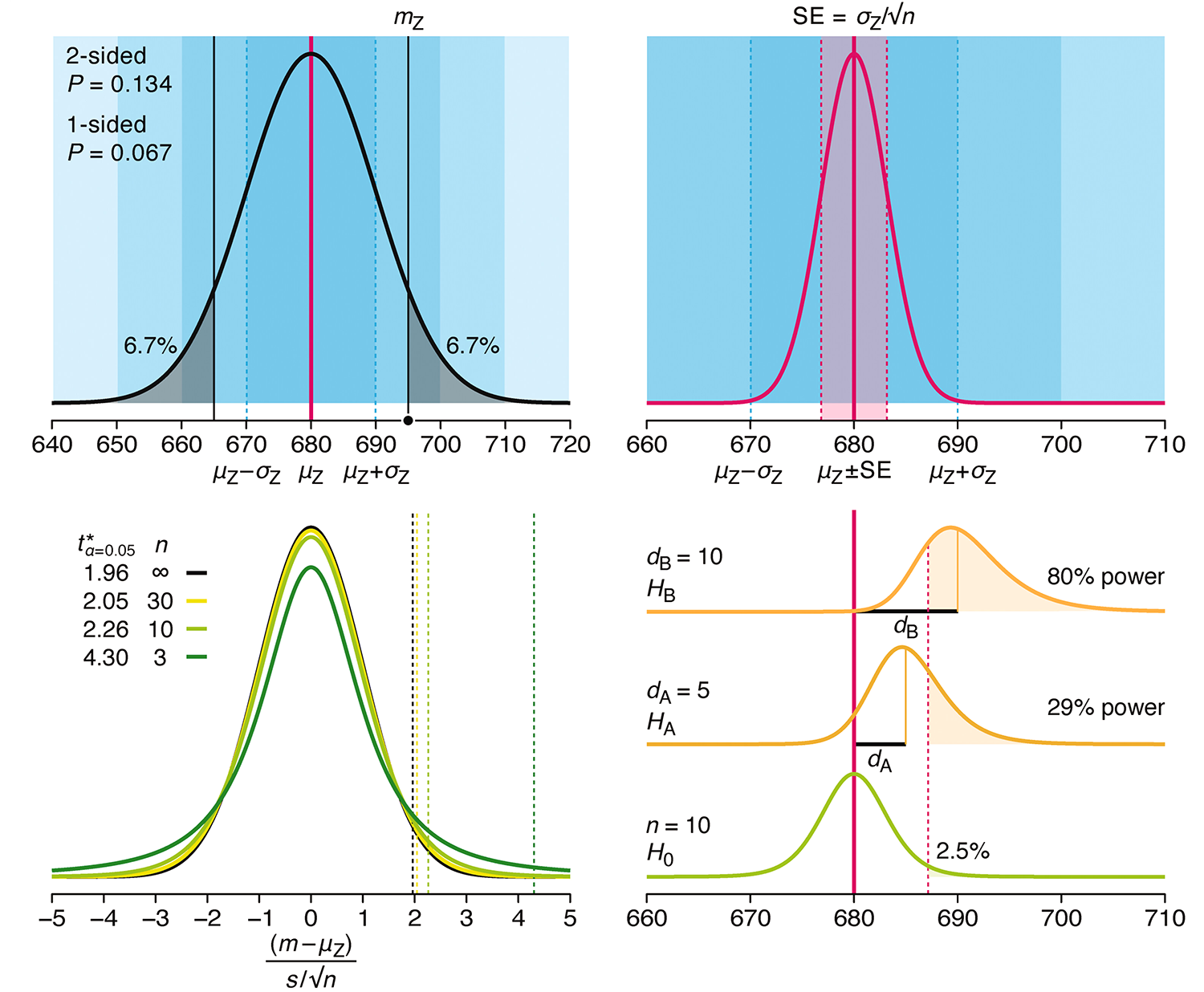
Altman, N. & Krzywinski, M. (2024) Understanding p-values and significance. Laboratory Animals 58:443–446.
